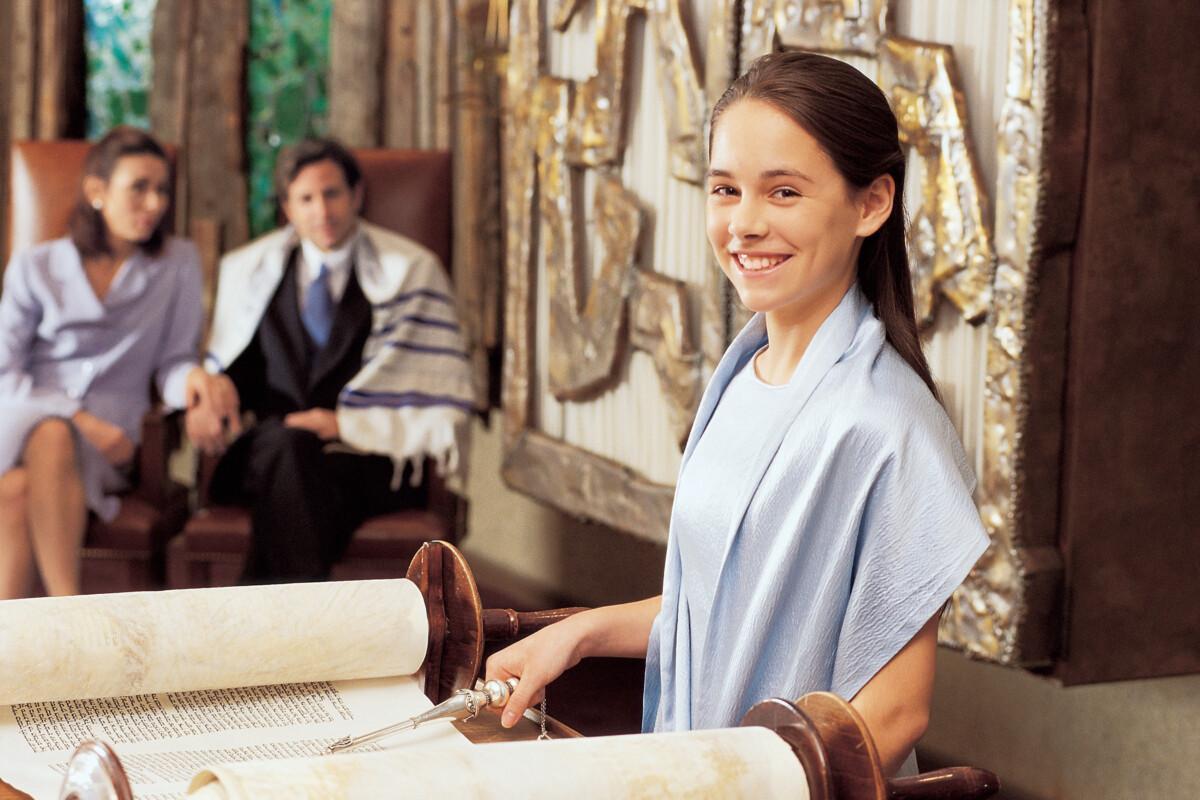
Getty Images
100 Years of Bat Mitzvahs in America
By Drew Kramer
The first reported bar mitzvah occurred in the 15th century. It was a simple coming of age celebration, marked only by calling the bar mitzvah boy to make a blessing over the Torah and deliver a public speech thanking his parents and guests. As the Jewish people spread from their concentrated areas in Europe into North America in the 18th and 19th centuries, the importance of the bar mitzvah ceremony expanded from their fear that assimilating Jews would lose their connection to their history and their faith.
Early in the 20th century, as the suffrage movement championed women’s rights in the United States, so too did the women’s role in American Judaism. In the 1920s, as women took on the right to vote, they likewise demanded the obligations and responsibilities of Jewish adulthood via the bat mitzvah. On March 18, 1922, two years after women received voting rights, a young girl named Judy Kaplan became the first official bat mitzvah. In this radical moment of Jewish and American history, the religion acknowledged that a girls’ coming of age is significant too.
In 1922, Rabbi Mordecai Kaplan bat mitzvahed his daughter at New York City’s Society for the Advancement of Judaism. Rabbi Kaplan joked that he began the ritual for women because he was blessed with four daughters. That a ceremony happened at all was revolutionary in its day, but the pomp and circumstance did not rise to the level of that of boys. Judy Kaplan did not read from the Torah or stand on the bima as the young men of her era enjoyed. Instead, she read a blessing from the floor of the temple, since reading from the bima would have been considered a masculine space.
Bat mitzvah ritual evolved slowly from there, often happening at summer camps far removed from congregational politics. By the 1950s, ceremonies began to enter houses of worship, championed by congregational rabbis willing to push for their own daughters to be heard in their home shul.
As the second wave of feminism spread in the 1960s, women demanded full rights in Jewish communities. Girls wanted to read from the Torah and to count in a minyan, the quorum of ten men over the age of 13 required for traditional Jewish public worship. Although she may not have known it at the time, in 1968, Robin Davis Tartarkin became one such woman. As a young girl growing up in a Conservative Jewish community in Syracuse, New York, keeping Kosher, lighting the candles on Friday nights and attending Temple every Saturday morning with her brother and grandfather was the foundation of her youth. After years of study in Hebrew school, on Friday, April 26, 1968, Robin felt “profoundly ready to step up to the bima to become a woman.” Unlike the lavish celebrations of today, Robin recalls a festive Oneg (an informal gathering for food and drink after Shabbat) for family and the congregation. The event launched Robin’s adult commitment to Jewish philanthropy and tradition. While at 13 she may not have considered herself a religious renegade, her call to the bima helped transform the role for women in synagogues across America.
In the years that followed, new ceremonies, like baby namings, evolved to honor milestone moments in Jewish womanhood. Sally Priesand became the first ordained American female rabbi in 1972. As women shattered glass ceilings on the bima, a new generation of girls grew up seeing themselves in their clergy and community leadership.
Today, Reform and Conservative tween girls across America expect to read from the Torah on the Saturday morning of their Bat Mitzvah without necessarily understanding the fight it took to get her there. While the feminist movement in America reshapes the vision for equality in American Judaism, inequality across all organized religions, including Judaism, still exists. In some sects of Judaism, women still struggle for equal rights in marriage and divorce. In those same circles, women are still overlooked in the count for miniyans and positions of Jewish leadership. There is still work to be done to achieve equality and inclusion in our modern world where gender is a spectrum. No longer bound by the binary of male and female, religious institutions must create room and rights for all beings across the diverse range of human experience.
